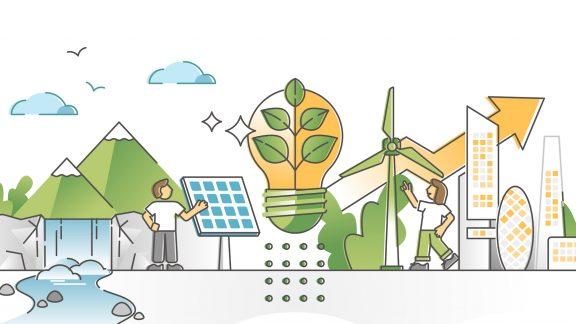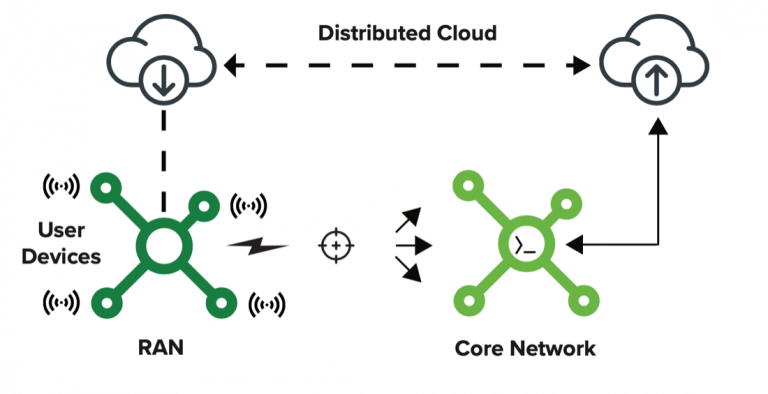The Path Toward Sustainable 6G
Sustainability has gotten a lot of press over the last year. The Intergovernmental Panel on Climate Change (IPCC) issued a monumental report based on more than 14,000 scientific research papers that spells out exactly what will happen if humanity does not immediately get greenhouse gas (GHG) emissions under control. The main message was that if we don’t start making rapid progress towards carbon neutrality, extreme weather, destruction of animal habitats, glacial melting and its corresponding rise in sea levels will dramatically accelerate.
To that end, VMware is excited to help lead the Next G Alliance working group that focuses on sustainable next-generation mobile networks. The group is called Green G and is chaired by me (Colleen Josephson), Marie-Paule Odini of HP Enterprise, and Micaela Giuhat of Microsoft. Dozens of member companies (including VMware, which contributed a great deal of content) have been hard at work over the past year crafting the group’s first white paper, “The Path Toward Sustainable 6G.” This post serves as a high-level overview of the paper’s key findings and recommended next steps.
Dissecting the problem
Tackling sustainability is a challenge that requires us to think beyond renewable energy. While energy consumption is an important aspect of sustainable practices, we also must consider things like land and water use, as well as recycling and sourcing of the materials used for electronics manufacturing.
Emissions can be broken down into two categories — direct and indirect. Direct emissions come from onsite combustion, such as diesel backup-power generators. Indirect emissions arise from activities not directly controlled by the company, such as electricity purchased from a grid provider and the carbon footprint of purchased equipment or business travel. Indirect emissions often represent most of an organization’s total emissions. This means that companies — whether they are service providers, network or datacenter operators, or hardware manufacturers — need to think about sustainability in almost all aspects of their operations.
Modern mobile networks are undergoing a transformation. As illustrated in Figure 1, a typical mobile network can be broken down into four main parts:
- End-user devices like smartphones and IoT devices
- The radio access network (RAN)
- The core network
- The datacenter network/cloud
We are seeing more and more network functionality move away from specialized hardware and towards virtualization. The core network was the first to be virtualized, but it is rapidly spreading to other parts of the network like the RAN and edge. The trend is toward complete virtualization, with the core, RAN, and edge running on software like VMware’s Telco Cloud Platform. This means that the line between telecommunications/mobile networks and the information and communications technology (ICT) industry as a whole is becoming blurred. With more and more network functionality being moved into datacenters, their share of network energy consumption is projected to grow almost five-fold. So we must account for the footprint of the entire ICT industry, rather than focusing only on the historical definition of the telecommunications industry.
The ICT industry has a crucial role to play in reducing GHG emissions. Telecommunications consumes 2%-3% of the global electricity supply, while the broader ICT industry currently consumes 5%-9%. While these numbers may sound small, the rapid growth in digitization could increase ICT power consumption to 20% by 2030. These projected increases in energy consumption are not driven by losses in efficiency. Rather, the driver for energy consumption will be the increased demand for data caused by our growing population and its seemingly limitless need for high speed. So despite the laudable increases in network efficiency to date, if we stagnate now, we’re headed for drastic increases in future emissions and power consumption. We must find new and innovative ways to reduce power consumption and transition to renewable energy sources.
Steering the beam of innovation
To make sustainable networks a reality, we need to evolve each part of the network. VMware is uniquely positioned to drive innovation in the RAN, edge, core, and datacenter. Even in 5G, many network elements can be virtualized through software components that are deployed in datacenters. Carriers are shifting from customized hardware solutions to software-enabled implementations on general-purpose hardware. More and more network functions are moving away from special-purpose hardware and being distributed across the datacenter, cloud, edge, and whatever may come next. This trend that is expected to continue in 6G. One benefit of software-defined networks is that they will enable a more rapid development cycle compared to traditional hardware-centric mobile networks. This will enable us to move faster when developing new energy-saving features, which will significantly lower the barriers to deployment.
The white paper makes a number of recommendations for how we should direct our energy when designing 6G, including:
- Investing in innovation in green datacenters, virtualization, network-management techniques, and IoT energy consumption
- Making energy consumption a first-class metric when designing 6G and beyond, comparable in importance to how we view reliability and availability metrics in current networks. Accurate, high-fidelity, and real-time/near-real-time data on energy consumption will be essential for rapid prototyping, energy-efficiency innovation, and catching design errors.
ICT as a sustainability enabler
Data networks are the backbone of our modern economy. With so many other industries relying on ICT, we have a responsibility to minimize our own emissions for the sake of our customers’ indirect emissions. Beyond that obvious conclusion, ICT can also enable sustainability in other industries in more innovative ways. Networks of environmental sensors, for example, allow us to manage our resource consumption like never before. Projects like the 5G Open Innovation Lab explore how we can leverage sensor networks to monitor things like soil moisture to reduce agricultural water consumption.
When it comes to remote work, implementing solutions such as videoconferencing and telepresence solutions (like AR/VR) can help reduce carbon emissions associated with business travel. The pandemic has become a digital tipping point. Nearly 60% of office workers foresee a permanent increase in online meetings with customers, suppliers, and colleagues. These changes require tools that better support remote interaction.
Other areas to focus ICT research and innovation will be smart grids, grid-interactive datacenters,
and micro-grids, where devices can share and trade low levels of energy to prevent the need for batteries.
The bottom line is that the potential impact of ICT as a sustainability enabler is substantial. Some sources estimate that the ICT industry will prevent emissions at a rate of 10x its own footprint by 2030.
What’s next?
VMware takes environmental, social, and corporate governance (ESG) very seriously. Driven by our 2030 Agenda, we are already making progress on a number of the recommendations outlined in the white paper. But we recognize that we must continue to push the envelope. We cannot rest on our accomplishments (although we are proud to be invited to the Dow Jones Sustainability Indices, or DJSI, for the second year in a row!). That’s why we’re doubling down on our commitment to sustainability and accelerating sustainable innovation in 2022 and beyond. Sustainability is a big challenge — but also a big opportunity. We are excited to lead the charge toward a more sustainable future.
Check out the full white paper here to get more detail about the path to sustainable 6G. The Green G working group will be organizing a webinar in the coming weeks to discuss the paper’s findings. There are several additional white papers in progress that will delve more deeply into topics in sustainable mobile networks, as well, so stay tuned!




